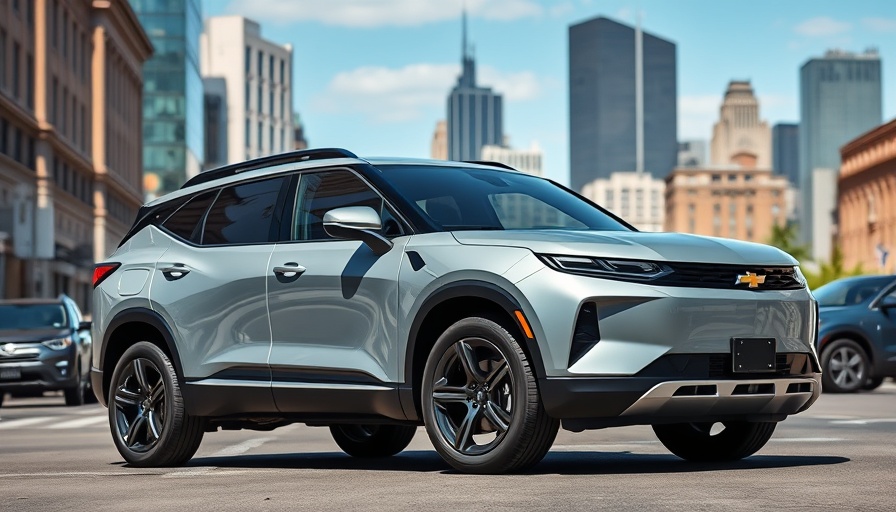
Chevy’s Surprising Decision: The Rear-Drive Blazer EV Discontinued
In a move that has taken the automotive world by surprise, Chevrolet has quietly ended production of its rear-drive Blazer EV model. This announcement marks a significant shift in the company’s electric vehicle (EV) strategy, signaling both challenges and opportunities for those in the automotive sales industry. As dealerships look to adapt to changing market demands, understanding the implications of this decision is crucial.
What Led to Chevy's Decision?
The discontinuation of the rear-drive Blazer EV seems to stem from several factors, including shifting consumer preferences and production capabilities. Initially, the Blazer was anticipated to cater to an emerging demand for electric SUVs with rear-wheel drive options, which are particularly appealing for performance enthusiasts. However, as consumer interest has increasingly gravitated toward all-wheel drive EVs for their versatility and stability, Chevy’s move was arguably a calculated response to market dynamics.
The Impact on Dealerships
This sudden change presents both challenges and opportunities for dealership owners and general managers. The cancellation of a highly anticipated model can lead to unforeseen inventory issues and customer dissatisfaction. Dealerships that had slated space for the Blazer EV will need to pivot quickly, focusing on enhancing their EV offerings to meet customer expectations. It’s essential to communicate transparently with customers regarding available models and explore incentive programs that encourage EV purchases.
Shifting Focus: Prioritizing All-Wheel Drive Models
As Chevrolet shifts its focus, there’s an emerging opportunity for dealerships to enhance their knowledge about the remaining models that feature all-wheel drive capabilities. This could involve training sales staff on the benefits of all-wheel drive, emphasizing improved handling and performance in various weather conditions. Ultimately, as the demand for electric vehicles rises, understanding which models resonate most with consumers will be essential for dealerships aiming to maximize sales.
Lessons from the Discontinuation
This development serves as a reminder of the ever-evolving nature of the automotive market. Dealerships should remain flexible, ready to adapt to new trends and consumer preferences. It’s an excellent time for dealerships to evaluate their current inventory and sales tactics, ensuring they remain competitive in a market that increasingly favors practicality and performance. Regular training sessions aimed at understanding consumer demands and enhancing sales approaches could prove invaluable in these times of transition.
Looking Ahead: Navigating the Challenges of EV Sales
In the face of changing vehicle trends, dealerships need to adopt new strategies. Investing in staff training that includes hands-on experience with available models, customer service tactics, and effective merchandise displays can bolster confidence among sales teams. Moreover, understanding the broader implications of model discontinuations and their impact on consumer sentiment is vital for maintaining engagement and trust.
As we navigate this complicated landscape of electric vehicles and model availability, the strength of a dealership lies in its ability to adapt and innovate. Communication with customers and a keen awareness of market trends will be pivotal in ensuring continued success in EV sales.
 Add Row
Add Row  Add
Add 




Write A Comment